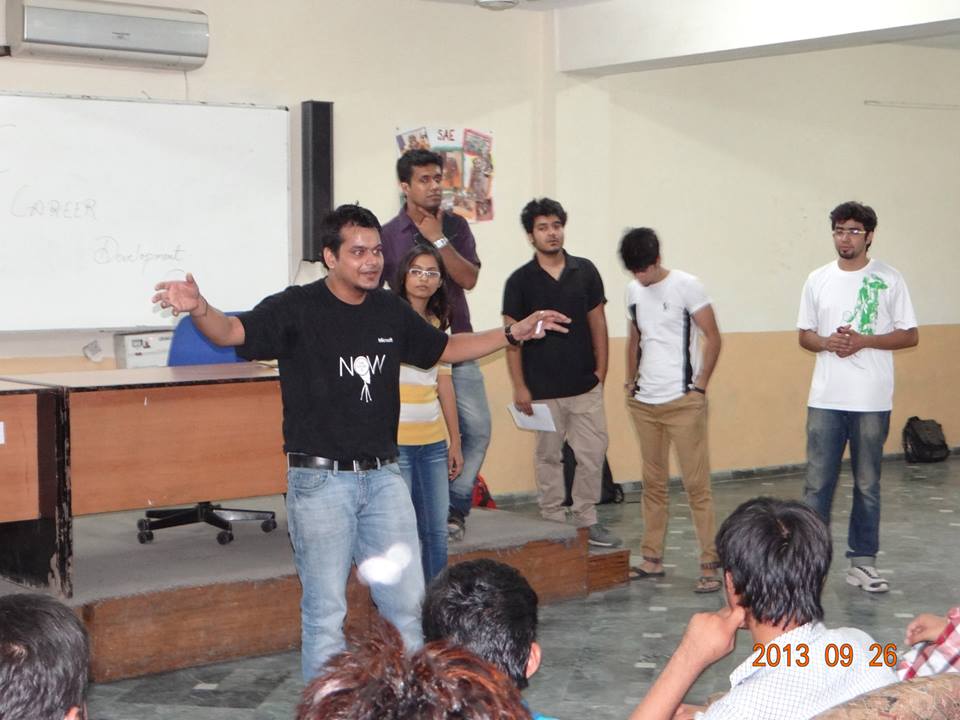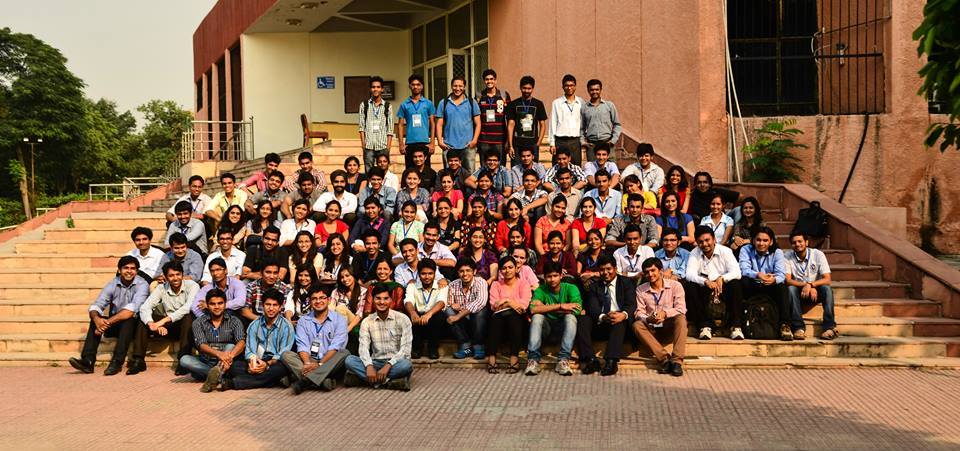My Journey with IEEE
It was in one of the technical session on Augmented Reality, that one of my junior asked-
“What has IEEE given you ?”
I replied back with a smile - “God brought me to the world, IEEE gave me the rest.
The confidence, zeal, opportunity, exposure, network and the success.”
True indeed, for a person lacking the confidence of raising the hand to ask question in class, to a person addressing 600 IITians. From a person having zero knowledge and interest in technology to a person placed in Microsoft. From dirt to zenith, thats how my journey with IEEE has been.
“Success is to be measured not so much by the position that one has reached in life as by the obstacles which he has overcome.”
-Booker T. Washington
When I came to the college, I was very shy, not good in programming, zero knowledge of technology, had no interest in Events and Activities. I carried the perception of the world as a routine of study, clear exams and loop again. I thought I’ll do my engineering, hang around with friends, get a 3 lakh rupee job from campus and thats it. Thats all I could have got. That was my destiny. I had that perception.




That perception changed when I joined IEEE.
Since my schooldays I was troubled by the term “cloud”, so when I saw the poster about an IEEE event in my college entitled “Know your Cloud” I was interested in attending it. The event was amazing and I learnt alot about the cloud. After the Event I was very eager to ask the speaker about how do you know it all? He said join IEEE you’ll know it all too. So thats how I got into IEEE.
“Success is not measured by what you accomplish, but by the opposition you have encountered, and the courage with which you have maintained the struggle against overwhelming odds.”
-Orison Swett Marden
So yes my journey to Microsoft was not a cakewalk. When I joined IEEE I was overwhelmed by the network it provided, the exposure and the opportunities. The fellow-members were full of skills and the seniors ones were there to guide us with their experience and leadership skills. For the first time I realized that there are things beyond pure academics. Since I was a junior member I was given the opportunities first and I took them with great enthusiasm. Be it making announcements, designing posters, doing osmosis marketing on facebook, sharing posts on IEEE-ASET page, I always took pride in what I did and made sure I was the best. At first I was a bit hesitant in making announcements in classes, but it went off gradually and I gained confidence. I attended an inter-branch collaboration event and won first prize there.
The turning point came when I was given a chance to conduct an event under IEEE-ASET technical fest Colossus. The event was Virtual Dj Mixing Competition and it was my original idea. The event saw a participation of over 120 students, with 3 computer labs full and conducted in two iterations. Despite of a few technical difficulties and problems thats came with the unprecedented participation, the amount of excitement and appreciation received was overwhelming. From that point onwards there was no looking back.
Every saturday there used to be a workshop in our college conducted by the senior members of IEEE. Be it Android Development, Website Development or for that matter even Adobe Photoshop, I learnt it all from those workshops. That learning was not not just limited to saturdays but continued online in the form of webinars and online hangouts. The seniors were always supportive.
In 2012, I was given the opportunity of Technical Director in the IEEE ASET Execom. It was a great opportunity for me to learn, teach and communicate. I conducted several seminars, webinar and workshops on current topic of interests like Big Data and Augmented Reality. Apart from this I also headed the SIG on Programming and taught students
.


.
“The most important single ingredient in the formula of success is knowing how to get along with people.”
-Theodore Roosevelt
IEEE gave me a great collaboration and networking platform. Be it All India Students Congress (AISC), Delhi Student Congress (DSC) or Quarterly Meets, we always got to meet new people from diverse backgrounds and regions, full of fresh ideas and enthusiasm. Much opportunities came through the network. In the fourth year of the college I was given the position of Branch Advisor in the senior execom and I started guiding my juniors. I wanted to bring the change and this time my juniors helped me. Currently we are working on IEEE-ASET Mentor programme which will enable one to one relation between a senior and a junior IEEE member who will guide and collaborate on Networking, Skills, Research and Academics.
When I sat for the seven rounds of Microsoft’s selection procedure, it was all that IEEE taught me helped. Be it technical skills, be it my confidence, be it problem solving skills or be it communicational skills.
Yes IEEE made me, and its time for me to pay-back.
IEEE is a mine of innumerous opportunities and comprises of people with immense capabilities, waiting to collaborate and influence and make a change into you and the society.
So why should you wait, go out and explore…
-Akshay Dixit
Branch Advisor at IEEE-ASET
Volunteer IEEE Delhi section Student Network
Member at National App Review Board
Mozilla Firefox Representative
Microsoft U Crew Representative
Former Technical Director IEEE-ASET
Former-Inter Microsoft
Placed and Future-Employee at Microsoft
Member IEEE since 2011
.png)














